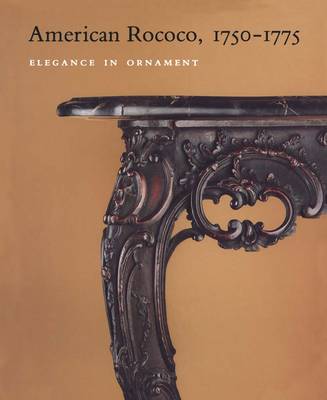Metropolitan Museum of Art
2 total works
American Rococo, 1750-1775
by Morrison H Heckscher and Leslie Greene Bowman
The rococo style was among the primary artistic contributions of the eighteenth century. Its manifestations throughout Europe have been comprehensively acknowledged and chronicled, but its influence in America, where it was probably the century's crowning design achievement (commonly referred to as the Chippendale style), had never been thoroughly examined. It was a lavish taste that found surprisingly fertile ground in the colonies, where affluent members of society, rejoicing in their hard-won prosperity, strove to adopt London fashions. The exhibition, "American Rococo, 1750-1775: Elegance in Ornament" was organized by The Metropolitan Museum of Art and the Los Angeles County Museum of Art, the latter's motivations emanating from the desire to bring an exhibition of American Chippendale furniture to a city where such objects have always been in short supply.
The book includes chapters on European origins and the American manifestations of the rococo, a brief discussion of firearms, and architecture, and medium-based explorations of objects made of paper, silver, wood, iron, glass, and ceramic. [This book was originally published in 1992 and has gone out of print. This edition is a print-on-demand version of the original book.]

